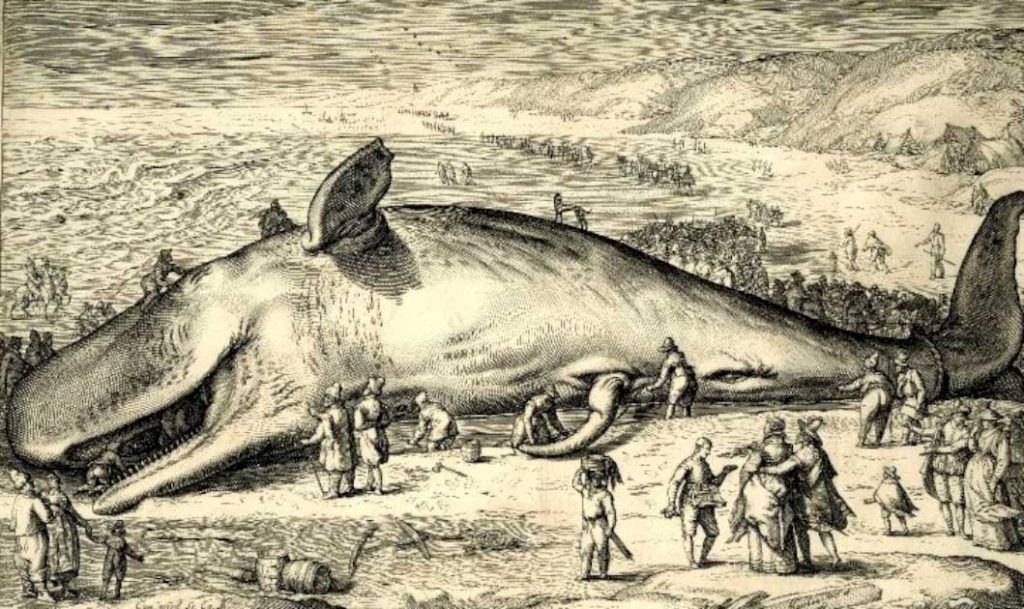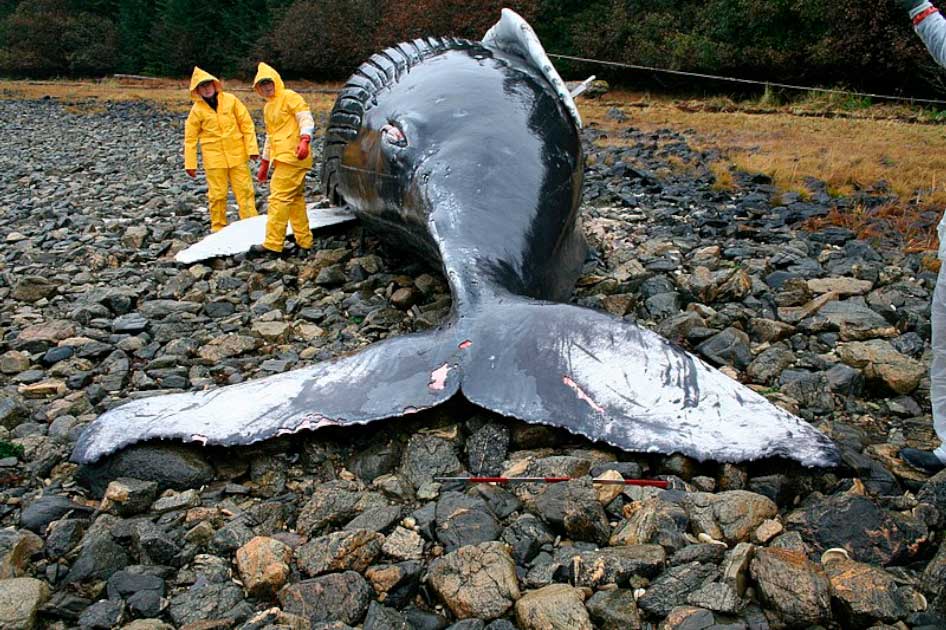Are whales dangerous? Most would note that, given from the danger associated with such a large animal, there is a certain risk in getting close to one. But most would also note that whales have a curious, gentle temperament and physical violence from one is very unlikely.
However, there is a hidden danger coming from whales which perhaps many do not suspect. Rarely, and only under a particular set of circumstances, a whale can become very dangerous indeed. For, you see, a whale can explode.
When a whale, gigantic in form and huge to look at, washes up on a seashore, it obviously attracts a lot of attention from people. People from nearby areas and neighborhoods rush to the beach to see the huge animal. Sometimes, a whale is lucky if it is alive and the people are able to save it by getting it back into the water.
However, most times, the washed-up whale is dead. These dead whales have a huge body that starts to decompose. Every animal’s body is the home of many bacteria and fungi. When an animal dies, the bacteria inside its body start decaying the internal muscles and organs of that body.
This decaying process of a whale’s body can lead to a build-up of gas inside the internal cavities of the dead animal, which often pushes the whale’s body to the brink of explosion. When the bacteria and fungi start consuming the muscles of the whale, there is a build-up of gas that makes the body swell and eventually explode from the internal pressure.
And this has happened on several occasions. For example, there was one famous incident of a whale exploding on January 29, 2004. However, there was another incident in 1970, which will sound highly bizarre as compared to the latter incident.

While the 2004 incident happened because of natural gas build-up, the 1970 incident was a man-made process in which explosives were used. So, what was the circumstance of the two incidents, and how are they different?
A Tale of Two Whales
On the morning of January 29, 2004, a 17 meter (56 foot) sperm whale washed up on the coast of Tainan City, Taiwan. The animal was dead, and the local authorities lifted it onto a trailer to be transported to the Sutsao Wildlife Reservation Area, for study.
- Boston’s Sticky History: The Great Molasses Disaster of 1919
- A Real-Life Moby Dick? The Wreck of the Essex
However, as the huge whale was being transported through the streets of Tainan City, it suddenly exploded in the center of a busy street. The explosion was unexpected and left the people on the street sprayed with blood, whale blubber, and internal organs.
Clearly the jostling of the carcass as it was moved caused it to rupture, but nobody was prepared for the force of the explosion. It was clear, in the aftermath, that the whale’s body could contain extraordinary pressures, and that when they were released the result could be catastrophic.
But this was not the first time that a whale had exploded, nor the only way this could be brought about. It seems that the risk of the build up of gases was well known, and indeed in an earlier incident in Florence, on Oregon’s west coast in the United States, the explosion was induced by the hand of man.
On November 12, 1970, a whale that had washed up to the shores of Florence exploded after three days lying on the beach. The 14 meter (46 foot) long sperm whale carcass weighed a whopping 7 tons (6.3 tonnes), far too big to be easily moved.
While the corpse of the majestic animal attracted people from different areas, its body smell was only worsening. Soon, the smell became quite a problem for the onlookers and the local authorities, who urgently wanted to do something to get rid of the huge carcass before it created more problems.
For example, the local authorities thought that the carcass might engulf people in case anyone thought of climbing the huge body. A person falling into the interior of the body of the whale could die quickly because of the poisonous fumes released inside its body.
When everyone was estimating the scale of the problem that the sperm whale could be, Assistant District Highway Engineer George Thornton was looking at the solution. The solution for him was clear: blow up the whale like a huge piece of rock.
This incident happened years ago, and many people believe that the incident was only a publicity stunt. Although there is video footage of the incident, many people believe that the whole incident was a scripted one. However, reporters who were there to record the whole incident and people who watched this bizarre thing happen knew that it was true.
A Huge Blast
According to reports, the local authorities had weighed other alternatives to exploding a whale. However, they did not find any other feasible way of dealing with the stinking carcass. For example, burying the whale’s body was overruled because people thought that even after burial, the animal’s body would continue to stink.
Moreover, the local authorities would need a huge pit to bury the body. It was very difficult to dig such a large pit to bury the animal. Another way to get rid of the body was to get rid of methane gas inside with incisions on the body. After this, the body could have been cut into pieces so that scavenging animals could eat the pieces up.

However, no one was up for this task of manually cutting up the whale, a distasteful task and one that exposed whoever performed it to the horrible stench coming from the body. When all other ways were dismissed, Assistant District Highway Engineer George Thornton proposed that the whale should be blown up with half a ton (0.45 tonnes) of dynamite.
The idea was not mad, and his research into the type of explosives needed gave it a chance of use. The engineer made sure to take the advice of explosive experts from the US Navy before forming a plan. Oregon beaches were under the Department of Transport’s jurisdiction, so Thornton was allowed to take the final decision on disposing of the whale body.
The engineer made sure that precautions were taken to protect bystanders from any harm from the explosives. The explosives were planted by the land part of the whale’s carcass so that the explosion carries the pieces of the carcass towards the sea and drops them on the waves. It was planned that some pieces would go into the sea, washed away by waves.
The remaining pieces would then be eaten by sea birds and scavenging animals. The engineer also made sure that the people present on the scene were at least a quarter a mile away from the spot of the explosion. However, something somewhere went wrong.
It turned out that half a ton of dynamite, combined with the pre-existing build up of gases in the whale’s internal cavities, was more than sufficient. The explosion was far larger than anticipated, raining whale flesh and chunks of carcass down onto onlookers, their cars, and the surrounding film crew there to capture the moment.
A useful lesson to learn, then. When deliberately blowing up a whale, less can often be more.
Top Image: Exploding whales can occur due to the build up of gases inside the rotting carcass. Source: Sylwia Bratniec / Adobe Stock.
By Bipin Dimri